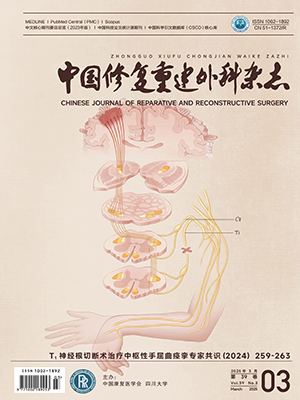Citation: LIUZongchao, TIANZegao, JIANGYan, WANGZhenlong, LIUYong, LUXiaobo. BIOMECHANICS STUDY ON THREE-DIMENSIONAL EXTERNAL FIXATOR FOR OSTEOPOROTIC FRACTURE. Chinese Journal of Reparative and Reconstructive Surgery, 2015, 29(2): 145-148. doi: 10.7507/1002-1892.20150031 Copy
Copyright © the editorial department of Chinese Journal of Reparative and Reconstructive Surgery of West China Medical Publisher. All rights reserved
-
Previous Article
PROCESSING STRATEGY OF DIFFICULT REMOVAL OF SCREWS IN PLATE YINQudong, GUSanjun, SUNZhenzhong, RUIYongjun, KONGYouyi -
Next Article
EFFECTIVENESS OF CLAVICULAR HOOK PLATE COMBINED WITH TRAPEZIUS MUSCLE FASCIA FOR RECONSTRUCTION OF ACROMIOCLAVICULAR AND CORACOCLAVICULAR LIGAMENTS TO TREAT COMPLETE ACROMIO-CLAVICULAR JOINT DISLOCATION WANGChaoliang, WANGYingzhen, ZHUTao, SUNXuesheng, LINChu, GAOBo, LIXinxia




